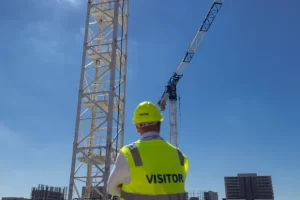Will Building Prices Come Down?
Construction costs play a significant role in determining the feasibility and affordability of building projects. Whether you are a homeowner, developer, or investor, the question of whether building prices will come down is crucial to your decision-making process. In this article, we will delve into the factors that influence building prices and explore the potential future trends in the construction industry.
The Current Landscape of Building Prices
Before we examine the future prospects, it is essential to understand the current state of building prices. Over the past decade, construction costs have experienced a steady upward trajectory. Several factors contribute to this upward trend:
1. Raw Material Costs
The prices of essential raw materials such as steel, cement, and lumber have seen significant fluctuations in recent years. Supply chain disruptions, geopolitical tensions, and changes in demand have all contributed to the volatility in material prices. When these costs rise, construction expenses are inevitably impacted.

2. Labor Shortages
The construction industry has been grappling with a persistent labor shortage. Skilled tradespeople, such as carpenters, plumbers, and electricians, are in high demand but in short supply. This scarcity of skilled labor has driven up wages, adding to the overall cost of construction projects.
3. Regulatory Compliance
Stringent building codes and regulations have become more prevalent in recent years. While these measures aim to enhance safety and sustainability, they also contribute to increased costs. Compliance with updated codes often requires additional materials, specialized expertise, and longer construction timelines.
The Future Outlook for Building Prices
While the current factors are driving building prices upward, it is essential to explore potential scenarios that could lead to a decrease in construction costs in the future. Here are some factors that might influence building prices going forward:
1. Technological Advancements
The construction industry is undergoing a technological revolution. Innovations such as Building Information Modeling (BIM), modular construction, and automation are streamlining processes, reducing waste, and increasing productivity. As these technologies become more widely adopted, they have the potential to optimize construction workflows, leading to cost savings that could be passed on to clients.

2. Sustainable Construction Practices
With growing concerns about climate change and environmental impact, sustainable construction practices are gaining traction. Building green, utilizing renewable materials, and implementing energy-efficient systems can help reduce long-term operating costs. While upfront construction expenses may be slightly higher, the potential for reduced energy consumption and maintenance costs could offset these initial expenditures in the long run.
3. Market Conditions
The future direction of building prices is inevitably intertwined with market dynamics. Economic factors, such as inflation, interest rates, and supply and demand imbalances, can influence construction costs. Changes in government policies, investment incentives, or global events can also have a substantial impact on the construction industry. Staying informed and adaptable to these market shifts will be crucial in predicting and responding to potential changes in building prices. https://citibuildconstruction.com.au/new-homes-bondi/
Conclusion
While the current landscape of building prices suggests an upward trajectory, the future is never set in stone. Various factors, including technological advancements, sustainable practices, and market conditions, have the potential to influence building prices going forward. As the construction industry continues to evolve, it is essential for stakeholders to stay informed, embrace innovation, and adapt to changing trends. By doing so, they can navigate the complexities of construction costs and make informed decisions that align with their goals and budgets.
In conclusion, while building prices may not necessarily come down across the board, there is hope for cost optimizations and potential reductions through various means. By embracing technology, adopting sustainable practices, and staying adaptable, the construction industry can strive towards a more efficient and affordable future.
Disclaimer: The information contained in this article is for general informational purposes only and should not be construed as professional advice. Consult with a qualified professional for specific guidance regarding your construction projects.
